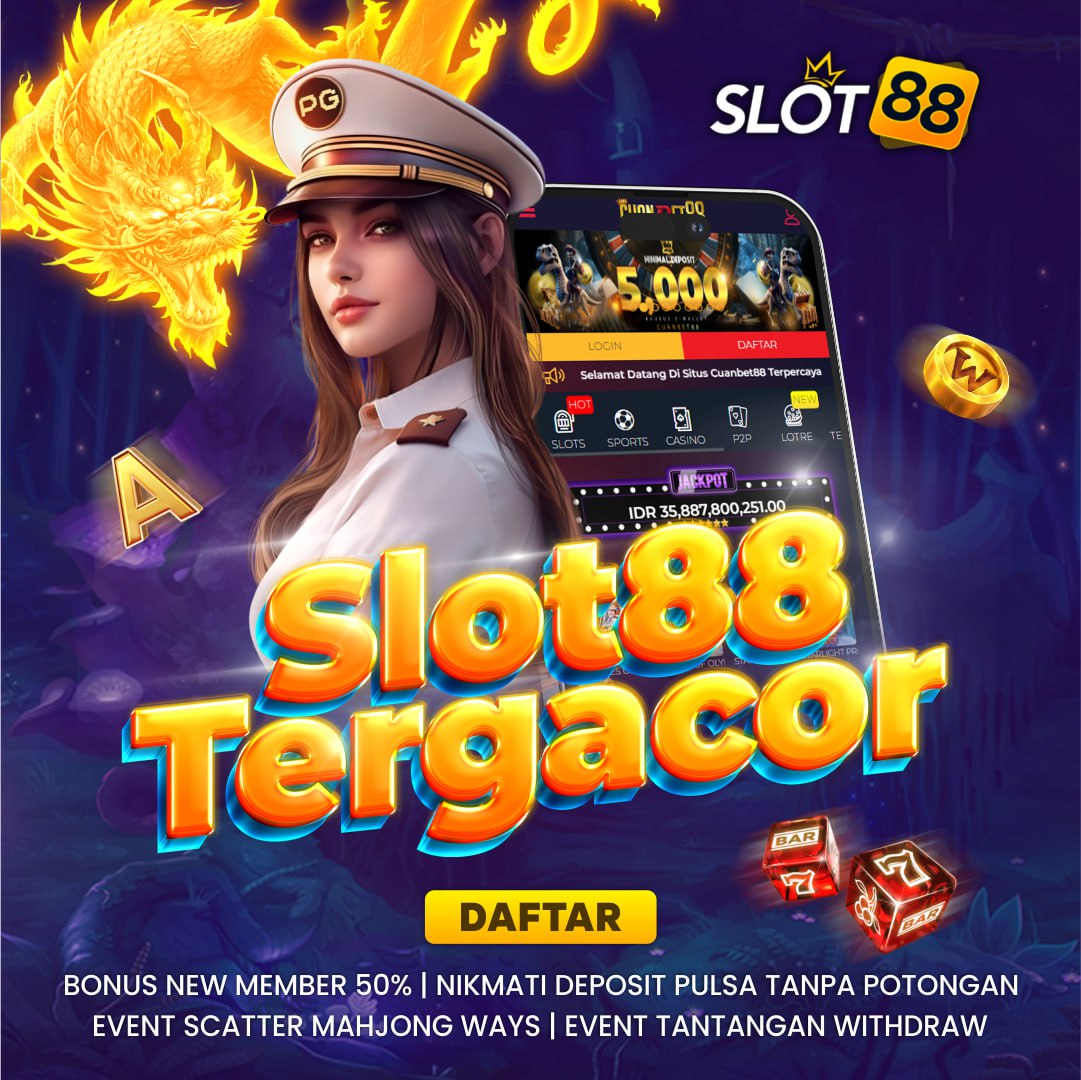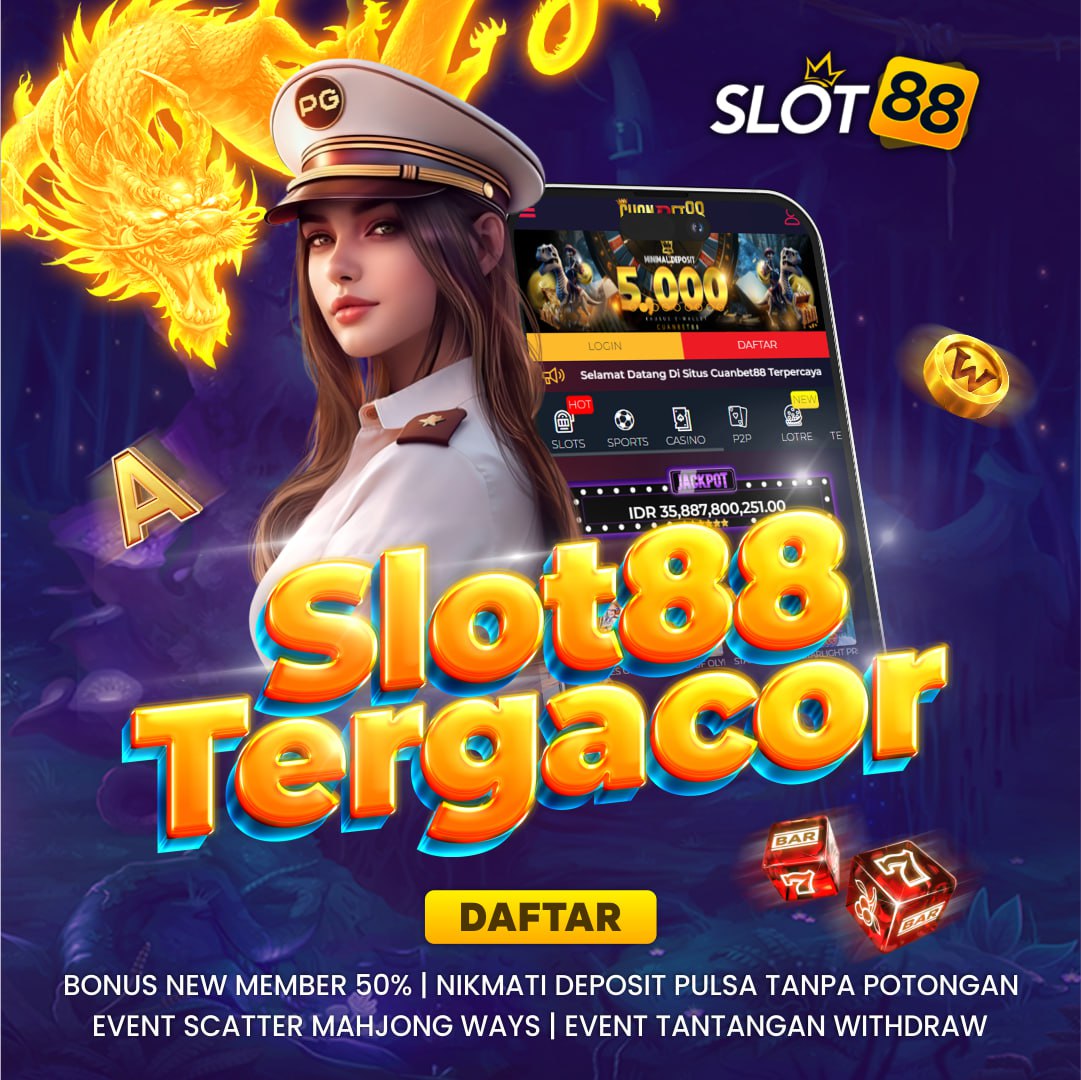CUANBET88 Daftar Situs Judi Slot Gacor Resmi Raja Slot88 Terbaru 2024
CUANBET88 Daftar Situs Judi Slot Gacor Resmi Raja Slot88 Terbaru 2024
Seiring perkembangan teknologi digital semakin berkembang pesat, perjudian slot online telah marak beredar dan dicari oleh masyarakat Indonesia. Mengapa situs judi slot online gacor populer & dicari oleh masyarakat Indonesia saat ini? Hal Ini dikarenakan slot gacor merupakan daftar judi online memiliki tingkat kemenangan sangat tinggi, memberikan tampilan gameplay sederhana cukup mudah dimainkan oleh pemula mencari cuan. Slot88 gacor tidak lepas menjadi daftar judi online memiliki peminat terbanyak dengan popularitas judi slot88 terbaru banyak menarik perhatian pecinta judi tanah air.
Cuanbet88 adalah situs judi online terbaru pilihan rekomendasi pecinta raja slot88 resmi terbesar hadirkan pola scatter hitam sebagai list puncak slot88 gampang jackpot hari ini. Popularitas slot88 telah menjadi daftar puncak judi online terpercaya slot gacor 2024. Kualitas pelayanan terbaik customer service siap online 24 jam responsif dalam mengatasi berbagai pertanyaan anda secepat kilat, dimanapun dan kapanpun dengan akses link alternatif terbaru.
Daftar Slot Gacor Gampang Menang Maxwin Slot 88 Terbaru 2024
Sebagian penjudi online merasa kebingungan dalam memilih bd slot online dengan kriteria daftar slot gacor saat ini. Beberapa provider besar slot online telah berlomba-lomba menyediakan bocoran RTP Live akurat peluang kemenangan meledak jackpot hari ini. Situs CUANBET88 merupakan taruhan judi online dalam menawarkan opsi penawaran game auto spin 88 menang maxwin terpercaya. Cukup miliki 1 user id anda telah bebas pascol dalam mengakses semua game media slot 88 login secara mudah. Berikut ini list game judi slot online terbukti paling gacor dalam memberikan kemenangan variasi spin88 sebagai berikut :
- Gates of Olympus 1000
- Cat Kingdom
- Mahjong Ways 2
- Starlight Princess 1000
- Lucky Twins Wild
- Gates of Gatot Kaca 1000
- Power Stars
- Candy Village
Seluruh permainan diatas merupakan daftar slot gacor gampang menang terbaru rekomendasi yang patut anda coba rasakan sensasi menikmati permainan slot online tiada duanya hanya bersama kami disini.
Keistimewaan Cuanbet88 Daftar Slot88 Terpercaya Resmi Gacor
Pada tahun 2023 telah banyak beredar situs judi online yang menawarkan berbagai keunggulan yang belum terbukti resmi dan terpercaya di Indonesia. Hal inilah membuat penjudi online berbondong-bondong mencari situs resmi membayar kemenangan para member setianya. Cuanbet88 adalah situs judi slot online terpercaya sebagai dewa slot88 resmi menawarkan beragam keistimewaan dalam taruhan judi dewaslot88 promosi terbesar.Kami telah dinobatkan sebagai juragan taruhan judi online terbesar rekomendasi slot mania terlengkap hari ini. Berikut ini beberapa detail benefit yang bisa anda nikmati di situs judi raja slot88 gampang maxwin sebagai berikut :
Game Terupdate
Taruhan situs judi online telah memberikan teknologi super canggih untuk semua jenis permainanan yang telah tersedia, dimana update setiap minggunya. Efek animasi suara 4d pada setiap permainan terasa lebih realistis membuat sensasi bermain raja slot88 gacor maxwin begitu seru.
Game Slot Gacor Peluang Kemenangan Sangat Tinggi
Maing-masing mesin slot biasanya cenderung memuntahkan jackpot saat telah mencapai batasnya. Nilai RTP (Return To Player) menjadi daya tarik tersendiri untuk para pecinta slot online dalam memberikan bocoran update terbaru mengenai mesin slot mana akan meledak jackpot sehingga meningkatkan peluang kemenangan bermain game slot. Semakin volatilitas tinggi dapat memberikan kemenangan beruntun scatter hitam mempermudah jackpot progresif jatuh ditangan anda.
Permainan Sistem Fairplay
Kami telah bekerja sama dengan semua provider terkemuka di dunia memiliki sertifikat lisensi resmi diawasi oleh lembaga legal dalam menerapkan sistem RNG (Random Number Generator) sehingga membuat hasil permainan bersifat acak tanpa adanya rekayasa.
Dari beberapa penjelasan diatas, daftar situs judi online telah menawarkan opsi keuntungan sangat bervariasi. Tunggu apalagi segera daftarkan akun anda dan klaim kemenangan jackpot anda game raja slot88 hari ini bersama CUANBET88 resmi 2024.
Share


